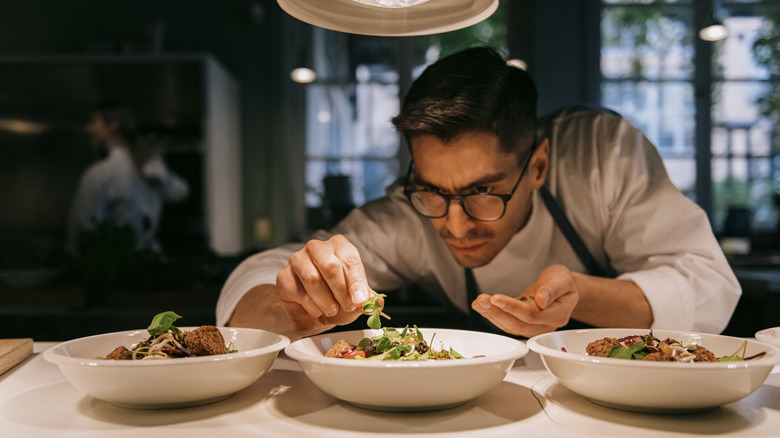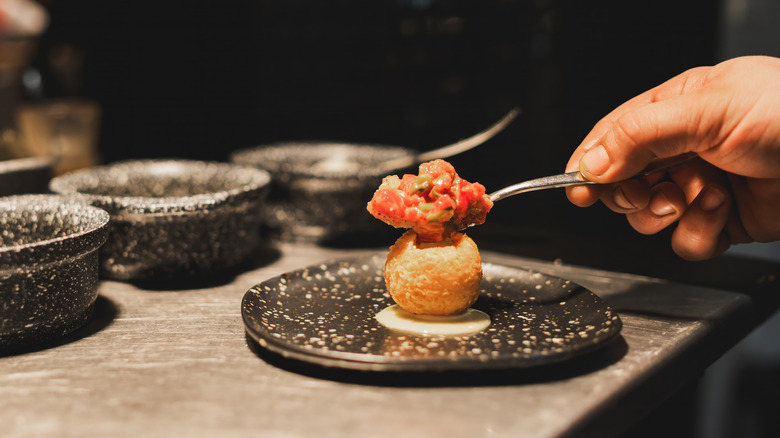The Biggest Mistake People Make When Plating Food
One of the biggest differences between home-cooked meals and something you'd get in a restaurant is visual appeal. People often eat with their eyes first, so even if you've followed a recipe to a T, nobody's going to take a photo of your prize-winning pot roast and put it on Instagram if it's simply piled on the plate. A trained chef puts a lot of thought into plating, so we reached out to Richard Sandoval, the visionary behind Richard Sandoval Hospitality for a few pointers.
The chef, restaurateur, entrepreneur, television personality, cookbook author, brand ambassador, and philanthropist has opened more than 60 restaurants on four continents, so you can trust him when he says to keep it simple. "One of the biggest mistakes is overcrowding the plate, which can overwhelm the diner," he explained exclusively to Food Republic. "Prioritize balance and allow negative space to frame the dish. Resist the temptation to include too many elements — less is often more."
If you're just beginning to experiment with proper plating, Sandoval said to start by placing the main component of the meal first, then build the rest of the look around it. "Balance color, texture, and proportion across the plate," he said. "Use odd numbers for garnishes to create a dynamic look."
Use the rule of thirds
There are many different approaches to organizing plate presentation. Ina Garten, for example, takes inspiration from picture frames. Richard Sandoval says to try using the rule of thirds. Before you put anything on the plate, visualize the space for each component. "Divide the plate visually into sections for protein, starch, and vegetables," said Sandoval. "Aim for proportionality — avoid oversized elements that dominate the plate."
Plating also depends on whether the event is casual or more formal, according to Sandoval. If you're putting together a more casual meal, he recommends keeping things clean and approachable. For fine dining, focus more on intricate details like vertical elements, sauce designs, and precise placement. The goal is to convey the theme and idea of the dish just by looking at it.
"Ultimately, plating should reflect the story of the dish and the intention behind its creation," he noted in our exclusive conversation. "Practice is essential, and with time, you'll develop a personal style that brings your culinary vision to life." And if you're not sure about your exact plating style yet, we have a lot more plating tips for home cooks. Plus there's always another easy option that Bobby Flay recommends: serve the meal family style.


